"We especially need imagination in science. It is not all mathematics, nor all logic, but is somewhat beauty and poetry." -Maria Mitchell
When you look up at the vastness of the night sky, if you've got few clouds, no Moon and sufficient darkness, you won't merely see thousands of tiny white pinpricks illuminating the black canopy of night.
Although, on average, stars are white in color, there's a very important reason for that. Our eyes have evolved to see a very narrow set of wavelengths of light, which we know as the visible light spectrum, ranging from violet light at around 400 nanometers to red light at around 700 nanometers.
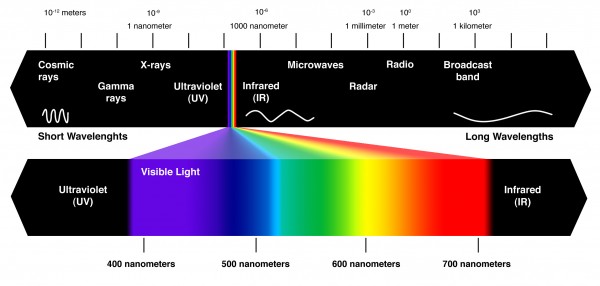
Inherently, there isn't anything special about those wavelengths of light, save for the fact of where we are. Which is, of course, on the surface of Earth, which is lit up during the day by the Sun!
This means that stars that burn at hotter temperatures than the Sun will appear bluer, while stars that are cooler will appear progressively yellow, orange, and even red. In the southern hemisphere, a view of the Southern Cross and pointer stars will show off this contrast,
while in both hemispheres, the great winter constellation, Orion (which rises at about 2:30 AM these days, but will show up progressively earlier as the year goes on), contains stars ranging from the deep orange Betelgeuse to the bright blue stars of the belt.
As colorful as the stars in these images are, though, they don't quite explain everything.
You may look at both of the images above and find some extended, reddish regions up there. It is most definitely not cool, red stars that are responsible for those colors. In fact, yesterday's Astronomy Picture of the Day was a close-up, high-resolution view of that reddish, nebular region in Orion, above.
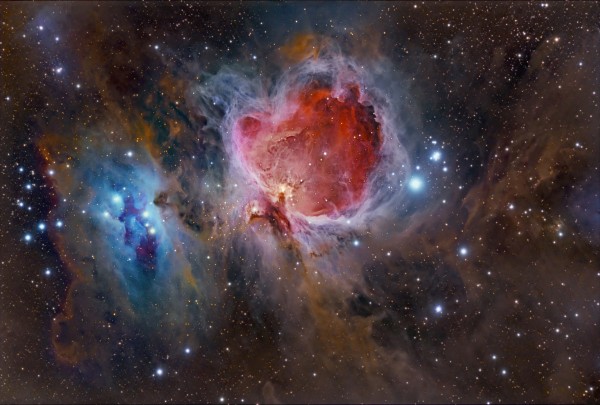
Image credit: Jesús Vargas (Astrogades) & Maritxu Poyal (Maritxu), and as always, click any of the images in this post for the full-resolution versions.
This great nebula, as seen up close, actually shows off the two major colors visible to human eyes found throughout dusty regions in space. On the left, the deep blue nebula sharply contrasts with the larger, red glow coming from the right.
It turns out that regions of space that glow red are a little more common, but regions that glow blue are abundant as well. The question I'm sure you're wondering, of course, is why. Let's take a look at the nearby Orion's belt to learn more.
The famed horsehead nebula, above, is a dusty, dark outline surrounded by a red, glowing region. Believe it or not, it's the young, hot, very blue stars that cause this nebula to glow red! The secret lies within the most abundant element in the Universe: hydrogen. Only the hottest, bluest stars have enough high-energy ultraviolet radiation to take the neutral hydrogen atoms present in interstellar space, and ionize them.
The way you ionize an atom is you knock an electron off of the atom, and the hotter your nearby star is, the more hydrogen it can ionize! Now, ionizing hydrogen doesn't emit any light; quite to the contrary, it absorbs light. But once your atoms are ionized, what do you have?
You've got a region of space with an abundance of both ionized atoms and free electrons. When they eventually find each other, they get back together. And when they do that, that's when it emits light!

Most of the light that gets emitted is ultraviolet light, but of the light that is visible, most of that occurs at a very particular wavelength: 656 nanometers, which appears to our eyes to be a bright, red color!
So when you see a diffuse, reddish glow coming from outer space, that's evidence of hydrogen gas surrounding hot, young stars. That's why the Eagle Nebula looks red to our eyes, and that's even why huge regions of some spiral galaxies appear red: that's hydrogen gas in regions that are currently forming new, hot stars!
In fact, if it weren't hydrogen gas that surrounded your very hot star (or stars), but a myriad of heavier elements, you would get a completely different set of colors. When we encounter that rare instance when other elements outnumber hydrogen in a hot region, the light show -- even to our eyes -- can be spectacular.
That's why, when you look either at a supernova remnant (like the Veil Nebula, above) or a planetary nebula (like the Ring Nebula, below) -- where recently deceased stars have blown off carbon, oxygen, silicon, neon, and other heavy elements -- you can see a spectacular show of colors as ionized electrons rain down onto these ionized atoms.
But there's one color we haven't explained yet, and those are the dusty, nebular regions that glow blue. The most famous of which, perhaps, is the Pleiades.
Although the Pleiades is a region filled with young, blue stars, they're not quite hot enough to ionize the atoms in the space between its stars! Instead, the dust can only reflect the light coming from the stars around it, and so these blue regions are known as reflection nebulae.
Even if your star isn't blue, the reflection nebula associated with it usually is (although there are exceptions), for the same reason that the sky is blue: space dust, just like the Earth's atmosphere, is better at scattering blue light than red light!
So when light runs into the neutral (not ionized) gas, the red light mostly passes through, with only a little bit reflected, while the blue light gets scattered in all directions, including towards us on Earth! For those of you inclined towards chemistry, you can mix your own reflection nebula in a beaker, and see how this works firsthand!
So when we look up at the huge molecular cloud complex in the constellation Orion -- hundreds of light years across -- we can see that it's full of both emission and reflection nebulae, as well as dark lanes of absorbing dust!
And that's how hot stars, hydrogen, heavier elements and light-scattering dust, combined with the light from all the surrounding stars, conspire to illuminate the depths of space with the full spectrum of visible light!
If this has you imagining what you'd see if, instead of that tiny portion of the light spectrum that's visible, you could see all the way from Gamma Rays down to Radio Waves, congratulations! You've just realized why we have telescopes that are sensitive to so many different wavelengths, and why we use false-color composites of all of this different information.
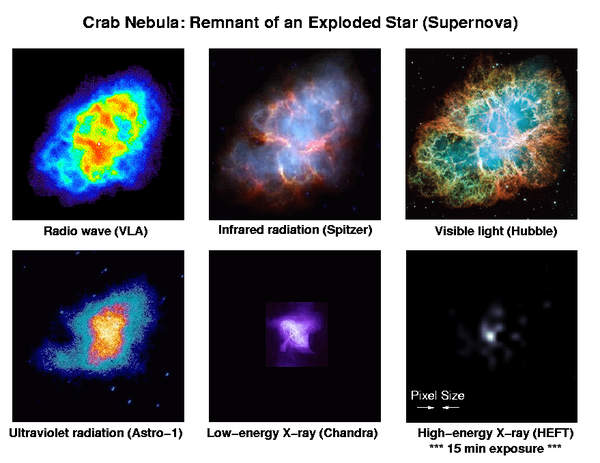
The huge variety of information we can see with our eyes covers just one part in 60 of the wavelengths in the electromagnetic spectrum, on a logarithmic scale! So appreciate what you can see and why it has the colors that it does, but don't believe for a minute that what you see is all there is. There's a whole Universe out there, and every day, science helps us see it and understand it just a little bit more. Don't forget how important it is to look.

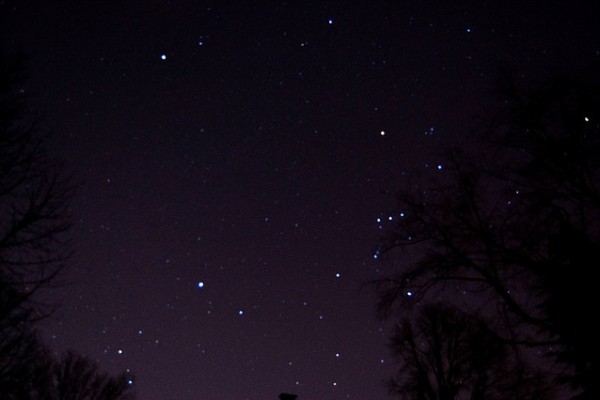
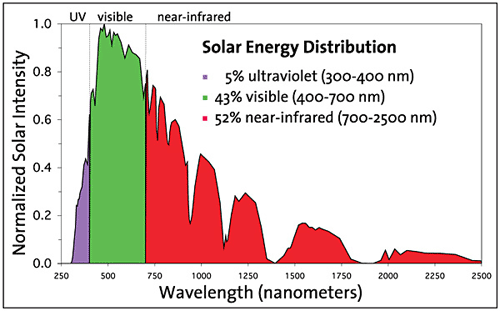
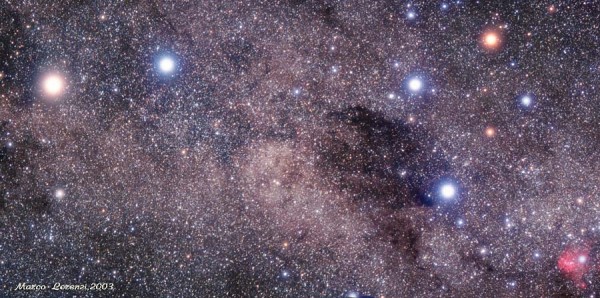
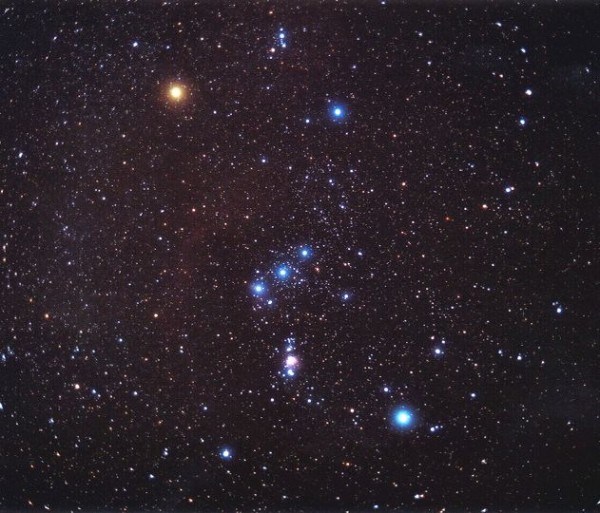
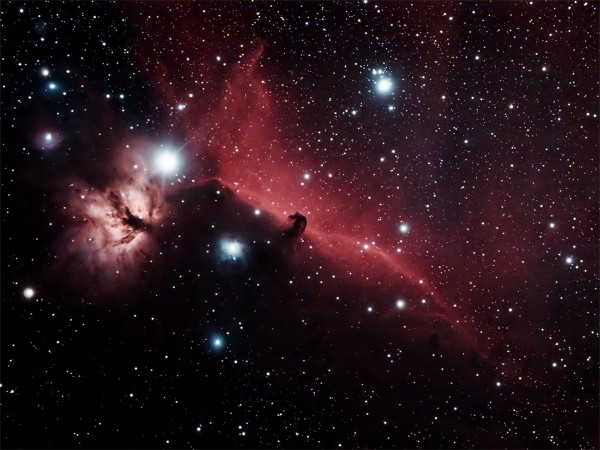
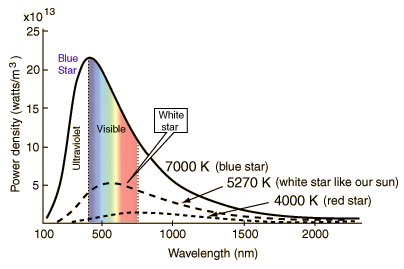
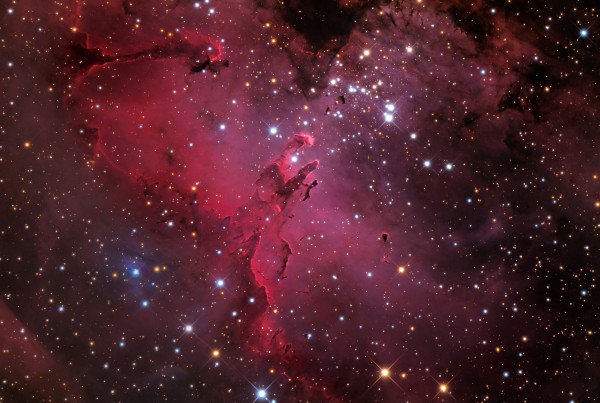
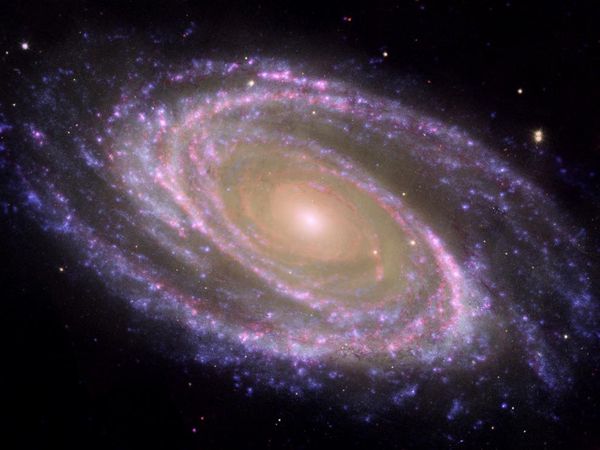
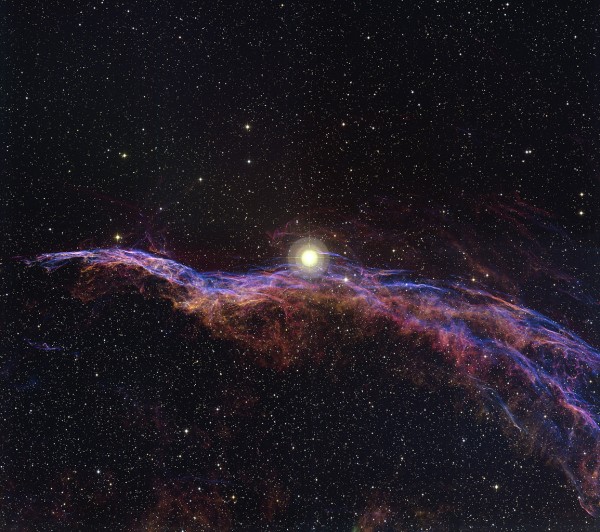
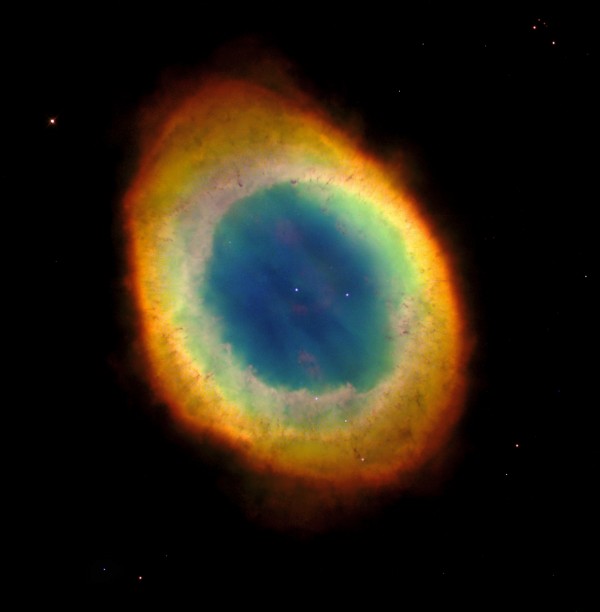
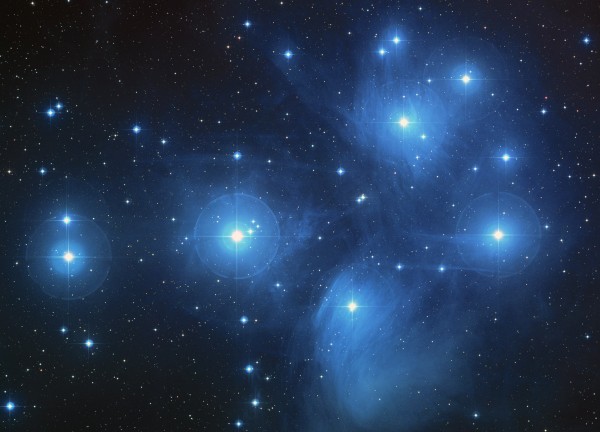
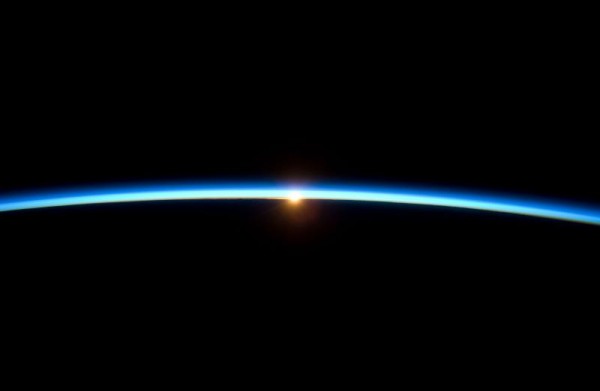
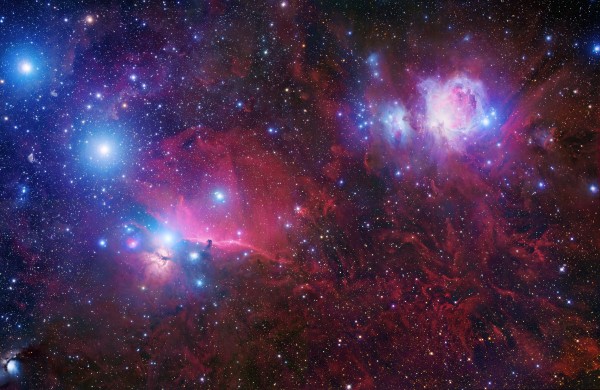
tried to think so, but i found it was not as the same in the actual process. As you mentioned, I still have doubts, but really thank you for sharing!
"What we observe is not nature itself, but nature exposed to our method of questioning." -Werner Heisenberg
Or our method of "seeing".
Long time reader whos read all of your archives, and this imho is one of your top 10 writes up ever.
*tips the cap
I agree with crd2, my only complaint is that math *is* beauty and poetry.
Thanks, crd2 and mena. I thought this was a particularly good one, too, and I'm glad you liked it!
Even after all this time, I have no idea which posts are really going to take off and which ones won't. Perhaps surprisingly, the one about animals from a few weeks ago has gotten more than ten times the traffic of this one.
Still, thanks for the praise and know that personally I'm much more proud of this one!
The star colours aren't really bright to begin with, and with accurate focus they will be burned white. Over-exposed pinpoints that have saturated the film/pixels.
So if you want to photograph the colours: defocus the camera slightly, and the stars will appear as small disks that retain at least some of the colours at their edges.
You've made me now badly -desperately- want to see with my naked eyes beyond the visible spectrum! Thanks for great writing and illustrations about our endlessly fascinating skies. Kudos to you, Ethan Siegel!
"Perhaps surprisingly, the one about animals from a few weeks ago has gotten more than ten times the traffic of this one."
You know this is the internet, right? :)
"So if you want to photograph the colours: defocus the camera slightly, and the stars will appear as small disks that retain at least some of the colours at their edges."
Another alternative is to fail to track the stars and the trails will retain colour.
Visual observation of slightly defocussed stars will also make their colours appear more clearly.
Wow, "The Color of Space" and the quote at the top of the article *isn't* Holly from Red Dwarf? Come on, man, "the thing about space, the colour of space, your basic space colour, is black!" Seems an astrophysicist should *know* that! (Clearly doubting the AI with a 6,000 IQ is right out.)
Y'know, same reason you can't see a black hole. So forget about that other recent news, too! :P
@BenHead, "Would you like some toast?"
Thanks Ethan
There is so much I just never knew.
Long time reader. Great post.
Ethan, I am now just utterly upset that my eyes are so inadequate to fully enjoy the splendor of the Cosmos! I have you to thank for that knowledge.
*sticks out tongue
LOL!
Remember that most of what we see in those pictures, happened millions of years ago.
I love the first diagram you have on this page showing the electromagnetic spectrum and highlighting the visible spectrum. I'm a dentist who studies the fluorescence of teeth and I haven't found an easier spectrum for other dentists to understand. I was wondering if I could use this image in a non-profit presentation to highlight the difference between ultra-violet and infra-red. If this is possible would you let me know?
Thanks,
Sheena Allen
it's imagine thank you for sharing
The universe is so vast and colourfull than our thoughts.it is so hard to measure the universe and find out curious questions? Like -where would universe end and how much time for our planet earth will live!